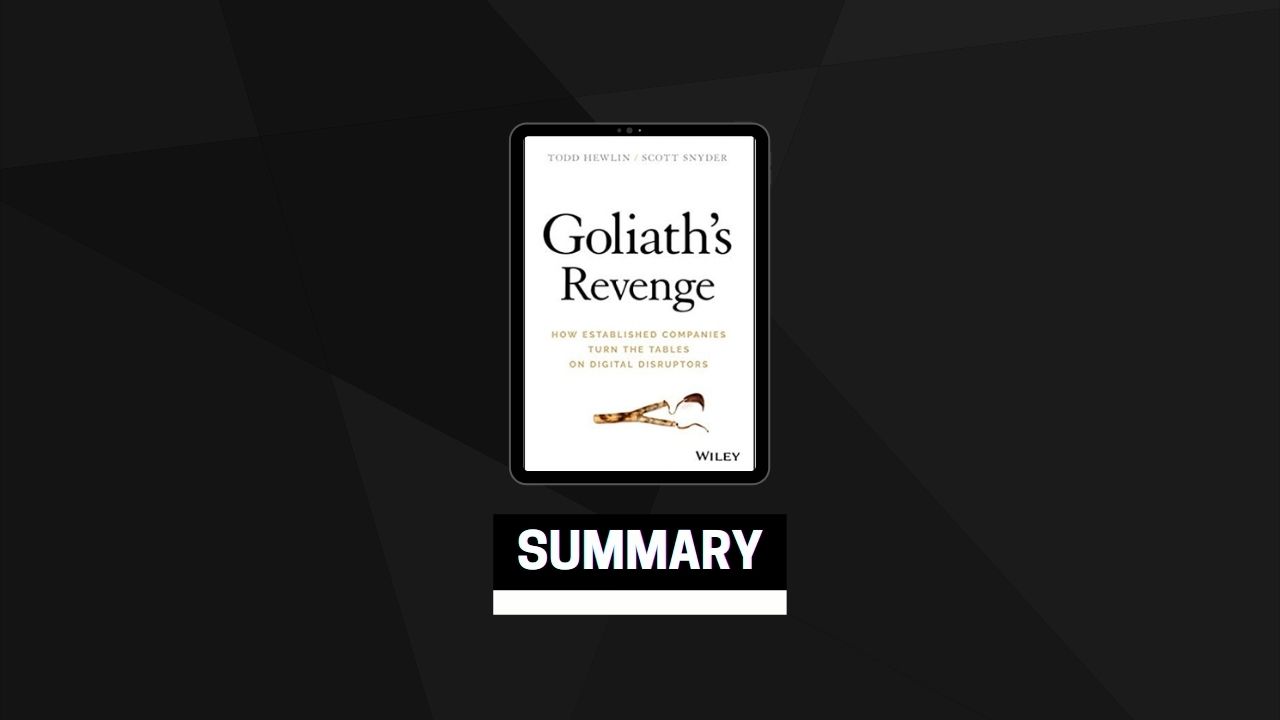The Six Rules of Goliath’s Revenge
Six rules govern how established companies and their teams are adjusting their vision, strategy, and execution to achieve Goliath’s Revenge. The eventual split of mind share and market share between established companies and digital disruptors will be governed by how well individual companies respond to these new rules. These new rules will also determine your career prospects as the industry you work in undergoes its digital transformation.
Time really is of the essence in refocusing your digital transformation, for both your career and your company. As you read the following six rules, think through which of your current attempts fit within them and which should be stopped or refocused immediately.
Rule 1: Deliver Step-Change Customer Outcomes
A little better than last year is not good enough.
A key lesson from the Davids of Silicon Valley is to aim for what venture capitalists call “10X” customer outcomes—offers that are 10 times better than the status quo. These are the opposite of the “slightly better than last year” improvements that established companies are so good at delivering. Digital disruptors are focused on game-changing customer impact. Tesla designs cars that are radically different than gas-powered ones, Apple and Android smartphones are at least 100 times better than our old Motorola and Nokia cellphones, and Netflix delivers entertainment anywhere you want it while Blockbuster required you to physically go to a store (and pay a big late fee if you didn’t return your video soon enough). You get the idea.
Delivering step-change customer outcomes is the first rule for a reason. If you fail to focus on customer outcomes or you aim too low and settle for “a little better” then none of the rules that follow are going to matter.
Rule 2: Pursue Big I and Little I Innovation
Innovate both top-down and bottom-up.
John Chambers, the famed CEO of Cisco, talked a lot about the “power of and.” It means that sometimes you don’t get a choice as you prioritize your innovations. There are times when you might even have to be great at two seemingly contradictory things simultaneously. Achieving Goliath’s Revenge requires just such a feat. Established companies have to be great at Big I disruptive innovation as well as Little I incremental improvements.
Big I requires CEO-level big bets, such as the IoT platform Predix at GE Digital or the massive investment in Digital Banking at BBVA. These top-down, bet-the-company innovations need to be governed by a company-wide Big I relay-race approach that ensures they are given every possible chance to succeed. Both financially and politically, established company leaders can only afford a few of these Big I bets, so their hit rate has got to be very high.
Little I is different, but equally important. It taps into the wisdom of crowds to act on opportunities that senior leadership teams may not even perceive exist. Little I empowers employees and installs an institutional innovation culture. General Mills’ Lemonade Stand program, the Pfizer Dare to Try initiative, and Adobe’s Kickbox process have allowed these companies to make substantial progress in harnessing this bottom-up, every-employee-involved form of innovation.
Rule 3: Use Your Data as Currency
You own your data, so use it.
There was a phrase in the consumption-obsessed days of the 1980s: “He who dies with the most toys wins.” Today that might be rewritten as the company with the most data under management wins. Established companies are waking up the real option value of data and the potential for that treasure trove to help them turn the tables on the digital disruptors within their industries. They’ve learned about the virtuous cycle of data: the more data you have today, the greater your algorithmic advantage tomorrow, and thus the more data you will attract the day after that.
The key is that data is the raw material of both defending your current businesses from digital insurgents and leveraging algorithmic advantages to grow into adjacent markets over time. Data will become your most valuable currency as you seek to deliver the step-change customer outcomes we discussed in Rule 1. Our bet is that you have only a limited idea of your company’s full data inventory and virtually no perception of what portion of your data assets are being fully utilized today.
Rule 4: Accelerate through Innovation Networks
Overcome the curse of “not invented here.”
achieving Goliath’s Revenge is going to require a more rapid pace of innovation than you or your company are likely capable of today. You need a second gear—one that can translate your current level of investment and effort into innovative offers that deliver step-change customer outcomes.
This second gear requires your company to develop and leverage broad external innovation networks that augment what you and your peers can deliver internally. This means reorienting from “not invented here” and “we know everything” mindsets to one that is welcoming and attractive to external innovators and ventures. It requires the right ecosystem, tools, structure, and funding mechanisms to quickly identify, validate, and spin-in new innovations from outside your company or even outside your industry. Established companies need to couple a venture capital (VC) mindset with their privileged domain knowledge around customer needs and operational systems to drive these early-stage ventures to commercial impact without crushing the butterfly.
Rule 5: Value Talent over Technology
Preemptive skill development pays off.
In the typical company, only 2% of today’s workforce fits the emerging needs of digital businesses. If you’ve made it to Rule 5, then you likely have this sinking feeling that the demand for new skills in areas such as user-experience design, data science, machine learning, robotics, and artificial intelligence (AI) is going to grow much faster than you and your company are ready for. The core technologies of digital transformation are available to every company with a bank account.
The speed at which you integrate your industry domain knowledge with the capabilities of these new digital technologies will be the greatest determinant of your future success. Realizing this, aspiring Goliaths are investing heavily in preemptive skill development and resource recycling. They are valuing new competencies in the areas highlighted above as leading indicators of their companies’ future industry power, revenue growth, and margin expansion.
They also realize that what gets measured gets done, so they are resetting the metrics for how they recognize and reward their employees to accelerate the organizational focus on digital innovation. Too much focus on near-term financial metrics is a sure way to discourage the medium- to long-term investments needed in building your company’s digital talent base.
Rule 6: Reframe Your Purpose
Have the guts to stay focused on what really matters.
The paralyzing fear of cannibalizing their current profitable businesses is the single greatest concern of established companies in the digital age. Kodak invented the digital camera but chose not to commercialize it in order to protect its film profit margins. Blockbuster lost out to Netflix by protecting the excess margins it garnered from the late fees its customers hated. The examples are endless.
Established companies turning the tables on digital disruptors are embracing smart cannibalization. They are setting up competing businesses to fully participate in both the old wave and the next one. They are allocating human and financial capital from separate pools to avoid stealing from the future to pay for the present. Doing all this requires these aspiring Goliaths to reframe their mission and to redefine the businesses they are in. They are setting their sights on a broader, more compelling mission that aligns employees, customers, and shareholders while refocusing on the triple bottom line (profits, people, planet).
Without this fundamental reframing of your mission, too many of your peers will simply wait out the digital transformation your company requires, clinging to a mindset of this too shall pass.


